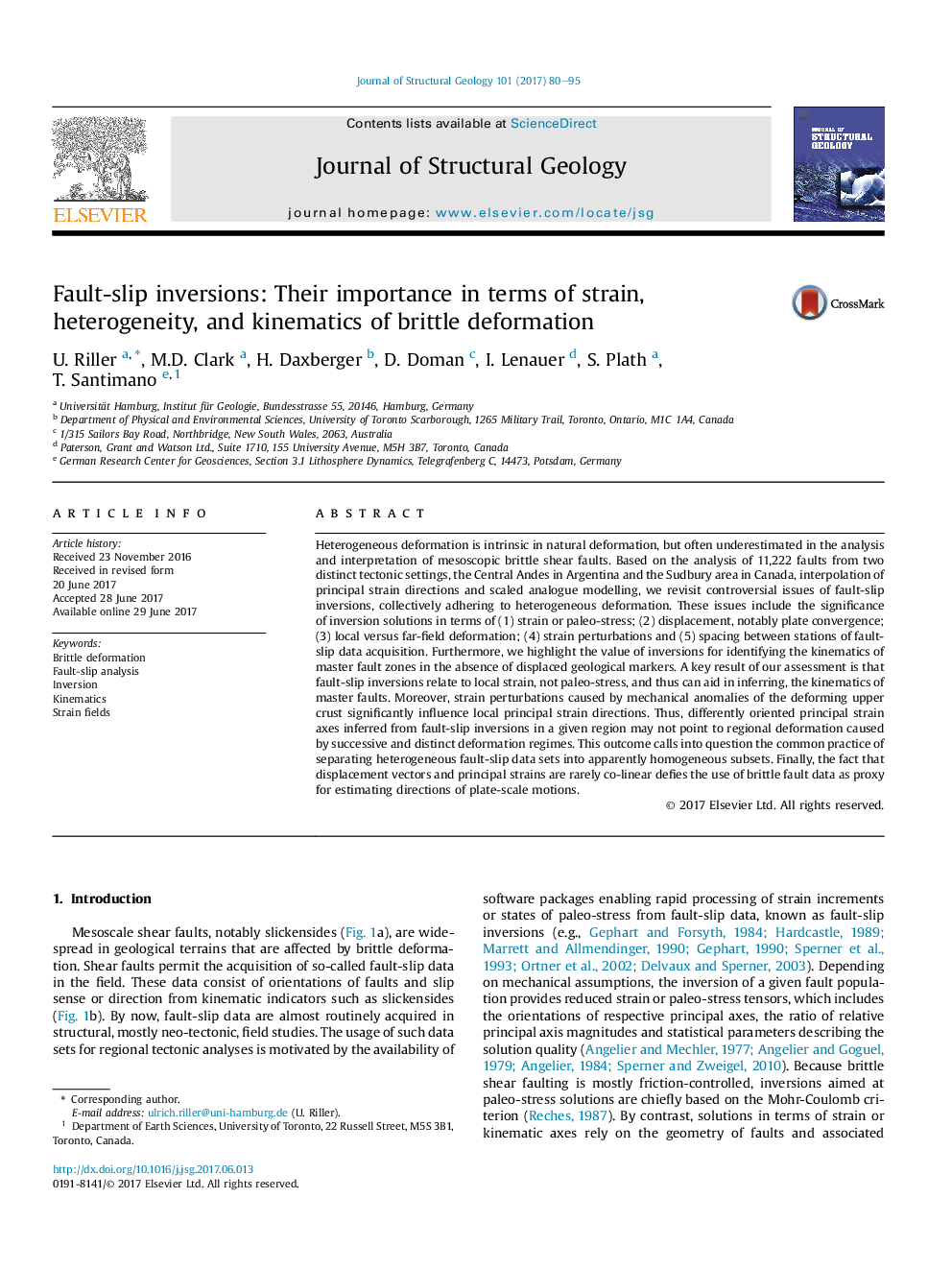| Article ID | Journal | Published Year | Pages | File Type |
|---|---|---|---|---|
| 5786291 | Journal of Structural Geology | 2017 | 16 Pages |
Abstract
Heterogeneous deformation is intrinsic in natural deformation, but often underestimated in the analysis and interpretation of mesoscopic brittle shear faults. Based on the analysis of 11,222 faults from two distinct tectonic settings, the Central Andes in Argentina and the Sudbury area in Canada, interpolation of principal strain directions and scaled analogue modelling, we revisit controversial issues of fault-slip inversions, collectively adhering to heterogeneous deformation. These issues include the significance of inversion solutions in terms of (1) strain or paleo-stress; (2) displacement, notably plate convergence; (3) local versus far-field deformation; (4) strain perturbations and (5) spacing between stations of fault-slip data acquisition. Furthermore, we highlight the value of inversions for identifying the kinematics of master fault zones in the absence of displaced geological markers. A key result of our assessment is that fault-slip inversions relate to local strain, not paleo-stress, and thus can aid in inferring, the kinematics of master faults. Moreover, strain perturbations caused by mechanical anomalies of the deforming upper crust significantly influence local principal strain directions. Thus, differently oriented principal strain axes inferred from fault-slip inversions in a given region may not point to regional deformation caused by successive and distinct deformation regimes. This outcome calls into question the common practice of separating heterogeneous fault-slip data sets into apparently homogeneous subsets. Finally, the fact that displacement vectors and principal strains are rarely co-linear defies the use of brittle fault data as proxy for estimating directions of plate-scale motions.
Related Topics
Physical Sciences and Engineering
Earth and Planetary Sciences
Geology
Authors
U. Riller, M.D. Clark, H. Daxberger, D. Doman, I. Lenauer, S. Plath, T. Santimano,
